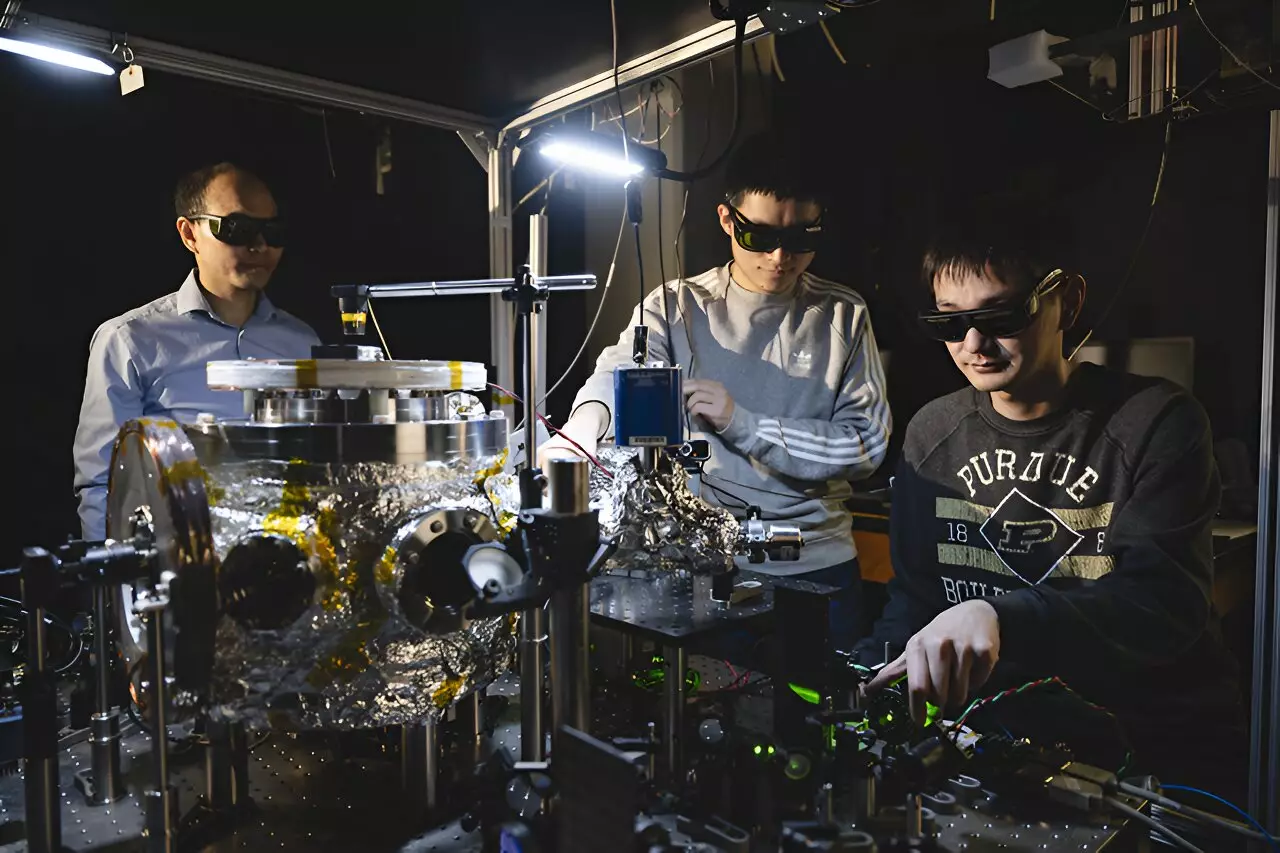In a groundbreaking and somewhat whimsical endeavor, physicists at Purdue University have revolutionized the study of quantum systems by simulating a “disco party” with fluorescent nanodiamonds. Under the guidance of Professor Tongcang Li, this innovative experiment not only captures the essence of levitated optomechanics but also delves deep into the enigmatic behaviors exhibited by spin qubits at unprecedented rotational speeds. The endeavor yields a novel exploration of the Berry phase, a fundamental concept in quantum mechanics, providing fresh insights into the connection between quantum mechanics, rotations, and gravity.
What sets this study apart? It underscores the importance of a unique experimental setup that allows for the precise manipulation of nanoscopic diamonds. These diamonds, mere specks measuring around 750 nanometers in diameter, serve as hosts for spin qubits, enabling scientists to perform detailed measurements that enhance our understanding of both quantum mechanics and gravitational principles. The implications of this work extend well beyond academic curiosity, posing exciting possibilities for future technological applications.
Purdue’s team successfully addressed significant challenges that have historically plagued experiments involving levitated diamonds. Their innovative approach incorporates a specialized ion trap capable of sustaining high vacuum conditions, facilitating the levitation and manipulation of these nanodiamonds. This advancement enables scientists to observe and interact with the spin qubits embedded within the diamonds more effectively than ever before.
In this pioneering work, the nanodiamonds were propelled to astonishingly high speeds—up to an astounding 1.2 billion rotations per minute. This speed not only enables the study of spin qubit behaviors but also yields insights into the concept of the Berry phase, a geometrical property in quantum mechanics through which the quantum state acquires a phase change.
“Evidently, this kind of observation had previously evaded our understanding,” reflects Li. The interplay between rotation speed and quantum behavior opens new pathways for exploration in quantum physics and its multifaceted applications.
The synthesis process behind the fluorescent nanodiamonds was no less remarkable. Created through high-pressure, high-temperature methods followed by exposure to high-energy electrons, these diamonds exhibit nitrogen-vacancy color centers that play host to electron spin qubits. By subjecting them to a green laser, researchers can induce fluorescence, emitting red light that allows for the precise measurement of their spin states. This intricate procedure underscores a marriage of advanced materials science and quantum physics.
Once levitated, the rotation of the nanodiamond became a spectacle in itself. The use of an infrared laser monitored the rotation, allowing researchers to extract valuable data regarding the axial orientation among the spin qubits. This ability to visualize the direction and speed of rotation was analogous to how a disco ball emits light patterns, which in this case, symbolizes the complex nature of quantum phenomena.
Collaboration played a critical role in this research, with contributions from leading experts in various fields. Notable figures involved include Alejandro Grine from Sandia National Laboratories and Chong Zu from Washington University in St. Louis. Their insights helped refine the experiment’s methodology and overall impact. The interdisciplinary approach showcases how advancements in quantum theory often require collaboration across multiple scientific landscapes.
Additionally, the team deployed sophisticated software like COMSOL Multiphysics for simulations, facilitating an efficient design and application of the integrated surface ion traps. The fabrication process, performed on sapphire wafers, employed precisely etched electrodes that highlight the complex integration of engineering and physics in modern research environments.
Beyond academic findings, the implications of this research may significantly influence technological applications in real-world contexts. For instance, levitated microscale particles have the potential to revolutionize sensor technology, leading to improved accelerometers and electric field sensors. These innovations hold promise for enhancing navigation systems and communication technology, as showcased by the efforts of institutions like the US Air Force Research Laboratory (AFRL).
As Li notes, this pioneering research positions Purdue University at the forefront of levitated optomechanics, equipped with state-of-the-art facilities designed to explore the depths of quantum mechanics. The continuous evolution of these experimental techniques ensures that the study of quantum systems remains vibrant, potentially unlocking new dimensions of understanding, especially concerning the interplay between gravity and quantum phenomena.
Purdue’s venture into the world of fluorescent nanodiamonds signifies a harmonious convergence of art and science, illuminated by the aspirational glow of potential breakthroughs in both theoretical and applied physics. As we move forward, the implications of this research could pave the way for innovative scientific advancements, reaffirming our fascination with the quantum world and its inherent mysteries.

